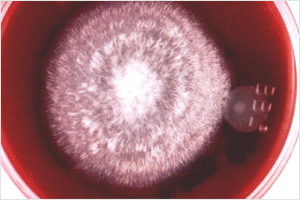A joint study between New York State Department Mycology Laboratory and the Department of Medical Mycology at the University of California has developed a new PCR test with the ability to detect and differentiate between Coccidioides immitis and C. posadasii.

Coccidioidomycosis is often referred to as ‘valley fever’ and the fungus Coccidioides grows in soils in areas of low rainfall, high summer temperatures and moderate winter temperatures, such as the southwestern United States and northern Mexico. This dimorphic fungus is endemic to certain parts of North America but there is a growing number of cases seen outside these regions because of increased travel and climate change.
Coccioidomycosis can occur in animal hosts as well as human. (You can find out more about the global impact of Coccidioidomycosis on the LIFE Worldwide Fungal Education website.)
At the moment, we have sparse data on the clinical differences in coccidioidomycosis caused by Coccidioides immitis and C. posadasii, but by being able to identify these different pathogens we can start to build a clearer picture of how these differ in presentation and response to treatment. This is especially important with the year-on-year rise of valley fever cases.
This new PCR test uses Cy5- and FAM-labeled TaqMan-probes for duplex real-time PCR assay for rapid differentiation of C. immitis and C. posadasii from culture and clinical specimens.
You can access the journal article here.
